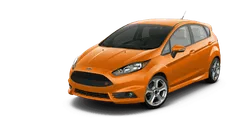

Ford Fiesta - Ford Fiesta MK2 Overview
Explore the Ford Fiesta and Ford Fiesta MK2 generations in detail. Discover features, specifications, and history related to these popular cars in Portugal.
The Ford Fiesta Mk2, a symbol of compact car evolution, was introduced in 1983 as the successor to the original Fiesta Mk1 that debuted in 1976. Ford revolutionized the small car segment with the first-gene...
Technical Specifications
Select Version
Dimensions
Engine
Driving
Others
History and Features
Mycarro AI
Apr 27, 2025
The Ford Fiesta Mk2, a symbol of compact car evolution, was introduced in 1983 as the successor to the original Fiesta Mk1 that debuted in 1976. Ford revolutionized the small car segment with the first-generation Fiesta, and the Mk2 carried that legacy forward with enhanced features and improved aesthetics. While retaining the charm and practicality of the original, the Mk2 focused on refinement and innovation that catered to the growing demands of urban drivers.
Design and Aesthetics
One of the most notable aspects of the Ford Fiesta Mk2 was its design. The exterior saw significant changes from its predecessor, including a more angular stance and refined lines that gave it a modern look for the '80s. The angular headlights and newly designed tail lights imparted a fresh appeal, while the larger windows provided an improved front and rear visibility. The hatchback layout remained, making it a practical choice for both city dwellers and small families alike.
Inside, the Mk2 welcomed drivers and passengers with a more refined cabin environment. The dashboard was redesigned for better ergonomics, featuring a cleaner layout and newer materials that improved overall comfort. The addition of a carpeted floor and improved seat materials reflected an era of enhanced expectations for compact cars. Ford aimed not just to offer functionality but to create an environment pleasant for daily commutes.
Performance and Engine Options
Under the hood, the Ford Fiesta Mk2 provided a range of engine options that catered to a variety of driving preferences. The base model featured a 1.1-liter four-cylinder engine, delivering commendable fuel efficiency and sufficient power for urban driving. Additionally, options included a 1.3-liter engine that offered a slight boost in performance without greatly sacrificing fuel economy. For those looking for a sprightlier drive, the sporty Fiesta XR2 emerged as a popular variant, boasting a 1.6-liter engine that brought a newfound sense of exhilaration to the compact segment.
The suspension system of the Mk2 was designed with a focus on comfort and stability, offering a progressive ride quality that was ideal for both city streets and open highways. This combination of engine versatility and comfortable handling made the Fiesta Mk2 suitable for a wide range of drivers, from the budget-conscious commuter to the spirited enthusiast.
Technological Advancements
During the early years of the 1980s, technological advancement was critically important, and Ford stepped up to the plate with the Fiesta Mk2. This model began incorporating innovations that would later become standard in the automotive industry. Features such as power steering, central locking, and even rudimentary air conditioning were available. Ford sought to ensure that even a compact car could deliver comfort and convenience typically found in larger vehicles.
The Dash also saw updates, including a digital display option which was considered cutting-edge at the time. The intelligent design of the controls and instrumentation enhanced the driving experience, reflecting the brand's commitment to innovation.
Market Reception and Legacy
Upon its release, the Ford Fiesta Mk2 received a warm welcome from consumers and automotive critics alike. It quickly became a favorite in the European market and solidified Ford’s reputation as a leader in the compact car sector. Its blend of practicality, performance, and modern aesthetics secured it as a quintessential urban vehicle and led to its long-standing popularity across various demographics.
Despite its practicality, the Fiesta Mk2 reignited the excitement of driving a compact car. It catered to drivers who sought economy without compromising performance. The Mk2's success paved the way for future generations, establishing it as an enduring figure in automotive history that many enthusiasts still celebrate today.
Conclusion
In summary, the Ford Fiesta Mk2 represents a significant chapter in the legacy of compact cars. With improvements in design, performance, and technology, it bridged the gap between functionality and modernity. Its ability to adapt to the changing preferences of consumers, while retaining the ethos of the original Fiesta, made it a beloved model. Even decades after its production, the Mk2 continues to evoke nostalgia among automotive enthusiasts and serves as a boastful reminder of Ford's longstanding commitment to innovation within the compact car category.
